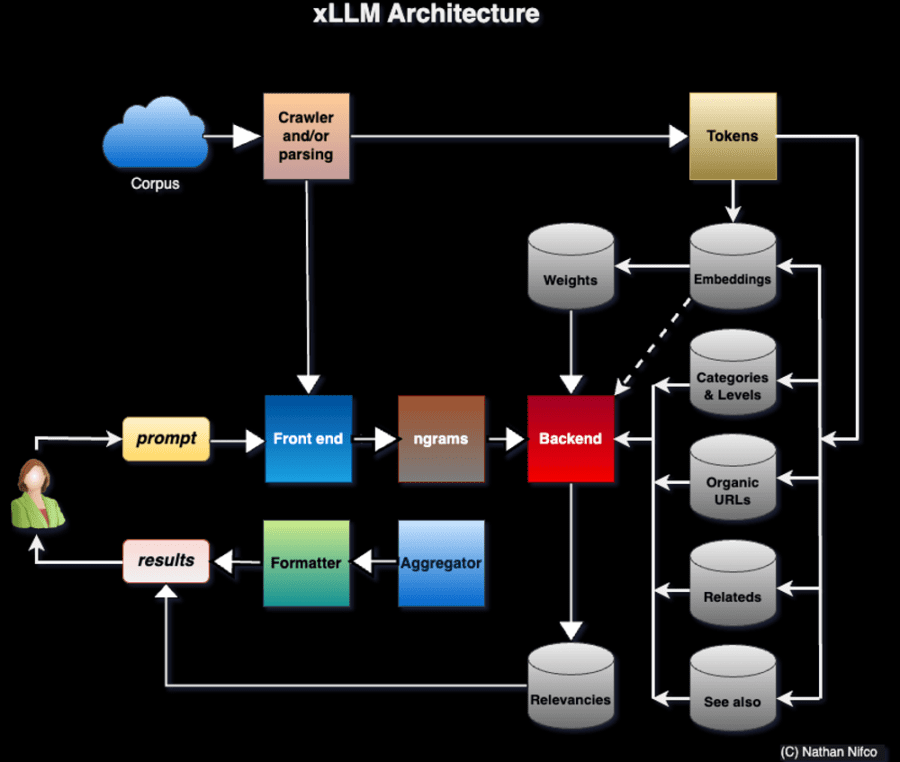With 23 top projects, 96 subprojects, and 6000 lines of Python code, this vendor-neutral coursebook is a goldmine for any analytic professional or AI/ML engineer interested in developing superior GenAI or LLM enterprise apps using ground-breaking technology, in little time.
This is not another book discussing the same topics that you learn in bootcamps, college classes, Coursera, or at work. Instead, the focus is on implementing solutions that address and fix the main problems encountered in current applications. Using foundational redesign rather than patches such as prompt engineering to fix backend design flaws.

You will learn how to quickly implement from scratch applications actually used by Fortune 100 companies, outperforming OpenAI and the likes by several order of magnitudes, in terms of quality, speed, memory requirements, costs, interpretability (explainable AI), security, latency, and training complexity.
Content
With tutorials, enterprise-grade projects with solutions, and real-world case studies, this coursebook covers state-of-the-art material on GenAI, generative adversarial networks (GAN), data synthetization, and much more, in a compact format with many recent references. It includes deep dives into innovative, ground-breaking AI technologies such a xLLMs (extreme LLMs), invented by the author.
The focus is on explainable AI with faster, simpler, high-performance, automated algorithms. For instance: NoGAN, new evaluation metrics, xLLM (self-tuned multi-LLM based on taxonomies with application to clustering and predictive analytics), variable-length embeddings, generating observations outside the training set range, fast probabilistic vector search, or Python-generated SQL queries. The author also discusses alternatives to traditional methods, for instance to synthesize geospatial data or music.

Some of the topics covered include:
- Fast, high-quality NoGAN synthesizer for tabular data
- Spectacular use of GenAI evaluation as an adaptive loss function
- Synthesizing DNA sequences with LLM techniques
- Creating high quality LLM embeddings
- Fast probabilistic nearest neighbor search (pANN)
- Building and evaluating a taxonomy-enriched LLM
- Predicting article performance and clustering using LLMs
- Introduction to Extreme LLM and Customized GPT
- Comparing xLLM with standard LLMs
Note to Instructors
This textbook is an invaluable resource to instructors and professors teaching AI, or for corporate training. Also, it is useful to prepare for job interviews or to build a robust portfolio. And for hiring managers, there are plenty of original interview questions. The amount of Python code accompanying the solutions is considerable, using a vast array of libraries as well as home-made implementations showing the inner workings and improving existing black-box algorithms. By itself, this book constitutes a solid introduction to Python and scientific programming. The code is also on GitHub.
How to Get Your Copy?
Published in May 2024 by GenAItechLab.com, 206 pages. Includes two glossaries (GenAI and LLM), an index, modern bibliography, dozens of illustrations and tables, and various clickable references both internal and external. Easy to browse in Chrome, Edge or any PDF viewer. See table of contents, here.
The book can be purchased here.
Author

Vincent Granville is a pioneering GenAI scientist and machine learning expert, co-founder of Data Science Central (acquired by a publicly traded company in 2020), Chief AI Scientist at MLTechniques.com and GenAItechLab.com, former VC-funded executive, author (Elsevier) and patent owner — one related to LLM. Vincent’s past corporate experience includes Visa, Wells Fargo, eBay, NBC, Microsoft, and CNET. Follow Vincent on LinkedIn.
